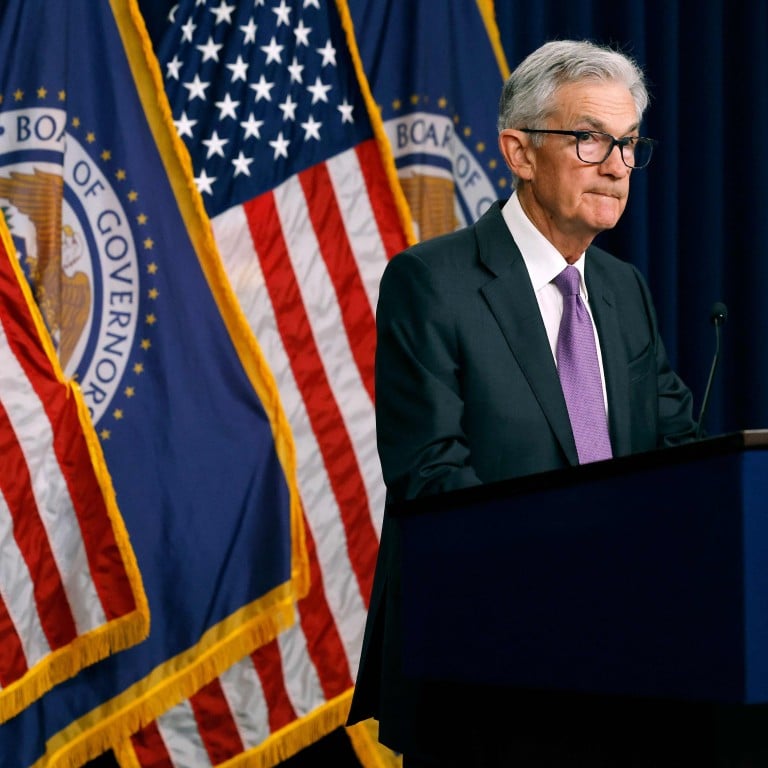
Why we better not count on US interest rate cuts this year
- In a matter of three months, amid strong US economic data and all-time S&P 500 highs, the outlook for interest rates has changed considerably
- The Fed may want to see inflation quashed without triggering a recession, but the more likely scenario is rates will come down only if the economy slows sharply
Yet, while China’s recovery is an important theme on trading floors, it does not move markets the way US economic data does, especially in a year when the world’s most influential central bank expects to start cutting interest rates.
A report on Monday showing US factory activity expanded for the first time since September 2022 not only exceeded the expectations of analysts, it cast further doubt on the most widely anticipated policy shift this year: the Federal Reserve’s signal that it expects to cut interest rates by three quarters of a percentage point.
Investors have consistently misjudged the timing of US rate cuts. According to a Deutsche Bank report last November, markets have priced in a dovish pivot by the Fed at least seven times, only to scale back their predictions about the timing and magnitude.

Not only had inflation fallen sharply – the core rate, which strips out volatile food and energy prices, stood at 3.9 per cent last December, down from 5.7 per cent at the end of 2022 – fears of a recession or a sharp slowdown lingered, partly because of concerns that the Fed would keep policy too tight for too long.
Fast-forward three months and the possibility that the Fed will not cut rates this year is being taken more seriously. Torsten Slok, chief economist at Apollo Global Management, is the most prominent Fed watcher to make the case for no cuts in 2024.
In a provocative report on March 1, Slok said that “the Fed will spend most of 2024 fighting inflation”, pointing out: “The economy is not slowing down, it is reaccelerating.” Other economists note the Fed has become more divided over the pace of easing. On March 22, Franklin Templeton noted that just under half the Fed’s policymakers expected borrowing costs to be cut by half a percentage point or less this year.
It is clearly becoming more difficult for the Fed to justify easing policy. First, the long-anticipated recession has still not materialised. Instead, the economy has picked up steam, powered by a remarkably resilient labour market, with unemployment below 4 per cent.
Generous pandemic-induced stimulus and a flexible jobs market have helped underpin relatively brisk growth. The private sector added 184,000 jobs last month – the biggest monthly gain since last July – while wage growth for those who changed jobs increased at an annualised pace of 10 per cent.
Second, inflation is coming down at a slower pace, and by some measures is reaccelerating. The Fed’s preferred gauge of inflation – the so-called core personal consumption expenditures price index – has gained momentum in recent months, standing at 3.5 per cent in the first quarter. This lends weight to the view that the last mile of the Fed’s battle against inflation is the hardest.

Buoyant growth is good for corporate earnings. Even emerging markets – which have borne the brunt of the Fed’s aggressive tightening campaign due to the surge in the US dollar – could benefit, in particular those more reliant on US demand.
However, there are also risks in keeping rates at high levels. Bank of America warns that financial conditions could tighten sharply if the Fed waits until next year to loosen policy. Indeed, if borrowing costs do not fall by June, the Fed may have little choice but to wait until 2025 because of unfavourable base effects for its preferred inflation gauge in the second half of the year, dubbed “jump risk” by Bank of America.
Fed faces tough 2024 balancing act amid rising deficit, bubble economy
Investors are not prepared for a “no cuts” outcome this year. Markets have priced in a soft landing for the US economy whereby inflation continues to decline, the Fed starts to reduce borrowing costs and growth holds up. The Fed would also like to have the best of both worlds, quashing inflation without inducing a recession.
Many investors believe it can square the circle. Yet they should be careful what they wish for. If the Fed cuts rates while inflation is still fairly high, further tightening may eventually be required. Indeed, given how sticky prices are, significant easing is only likely to occur if the economy slows sharply, something Donald Trump would relish as he attempts to reclaim the White House.
Nicholas Spiro is a partner at Lauressa Advisory

